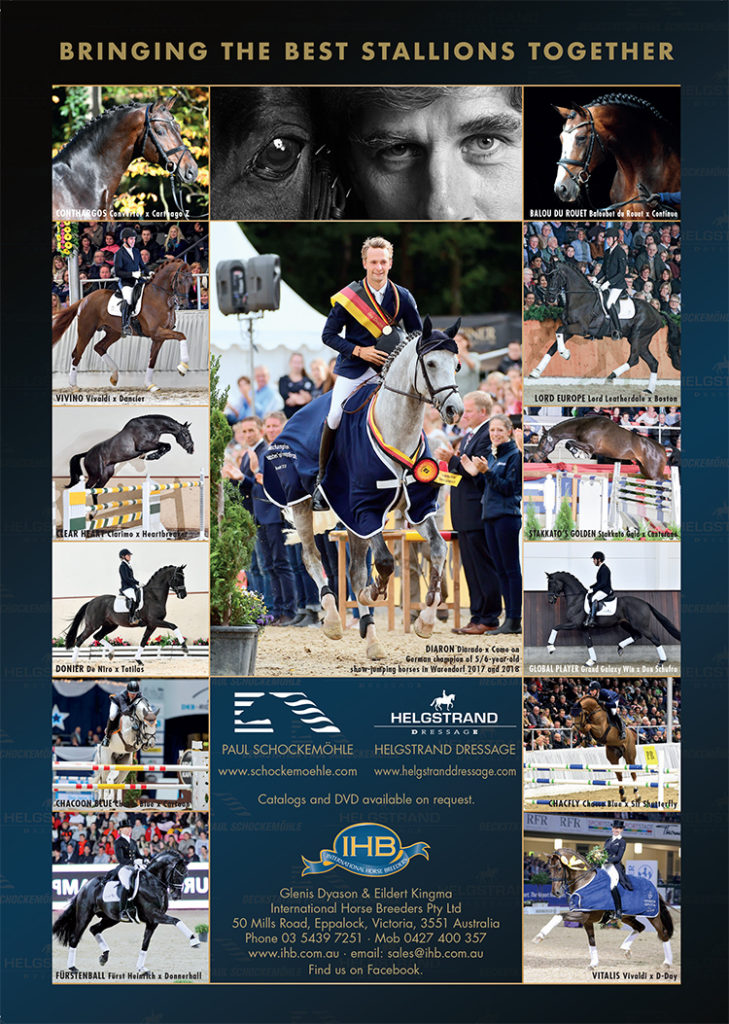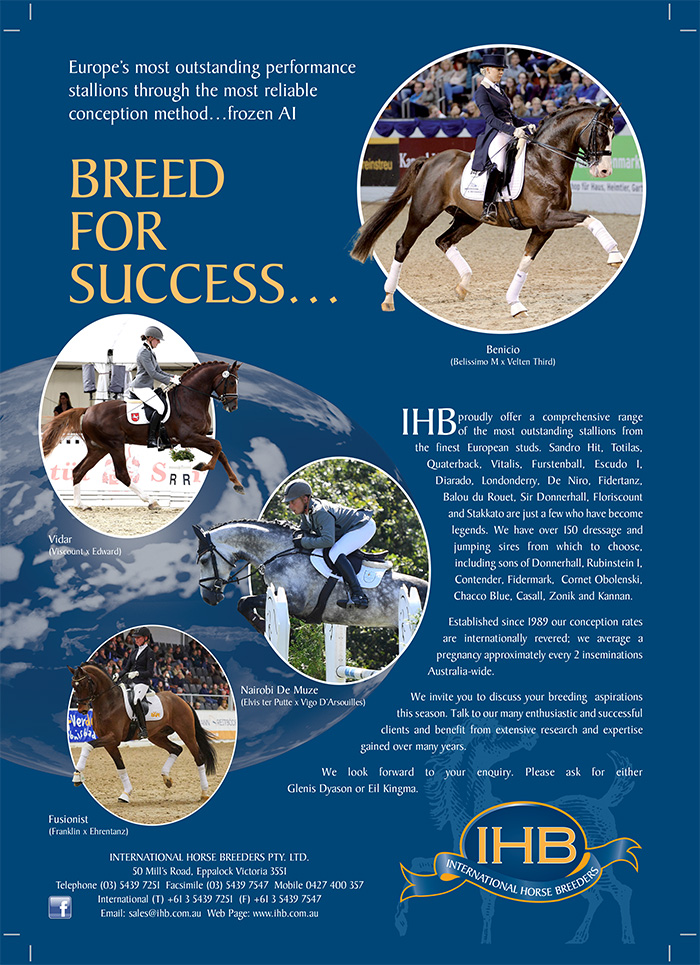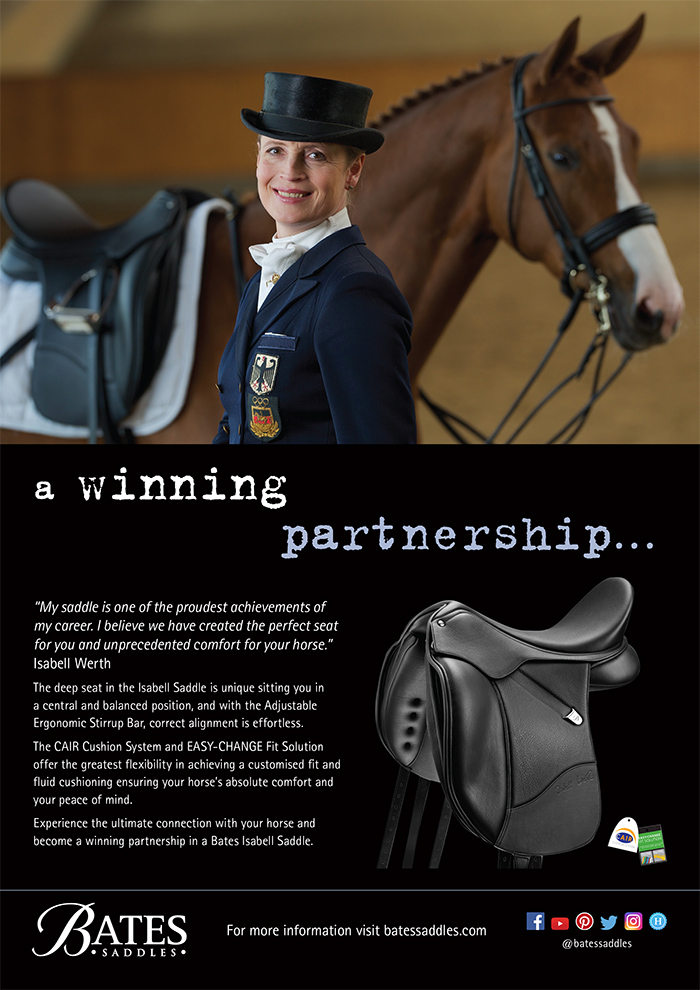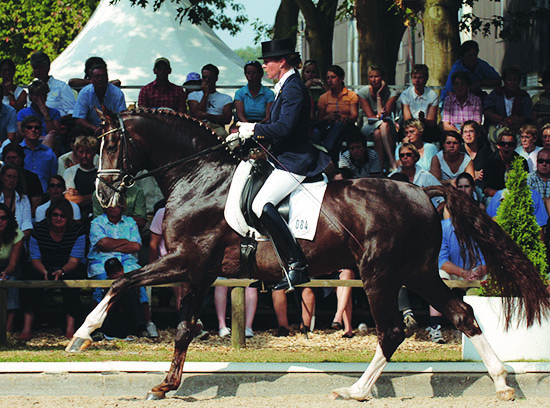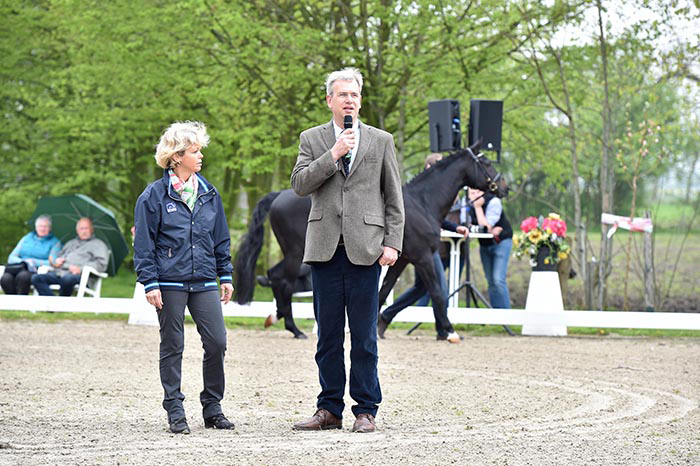
Jens and his wife, Susanne at their stallion show – photo Kiki Beelitz
Jens Meyer was born-and-bred a Hanoverian breeder. His father before him was a breeder of licensed stallions, and Jens, as a young man, learnt his craft at the State Stud Celle, before setting up one of Germany’s powerhouse stallion stations – Hengststation Jens Meyer. There he stood, amongst others, His Highness, Falsterbo, Dacaprio, Cashman and Herzensdieb.
Nowadays, Jens has cut back on the stallion involvement, although his wife is the part owner of Damsey, another horse that Jens discovered. Jens Meyer has a busy career judging all over the world, and acting as an advisor to the Blue Hors Stud. I caught up with him at the KWPN stallion show, and was just a little surprised to find that this died-in-the-wool Hanoverian breeder, was now a big fan of the Dutch horse.
“I like it that they have the philosophy to produce dressage horses and not just foals. When you listen to Bert Rutten really carefully, he’s a horse breeder, he rode Grand Prix, and when he talks about the horses, there is an idea you can follow. When he talks about the walk, he is not just talking about over track, he is talking about the right rhythm, and if horses have this, they are going to be able to do piaffe. He has these ideas, and he gives them to the breeders – so they are not just looking for medium trot.”
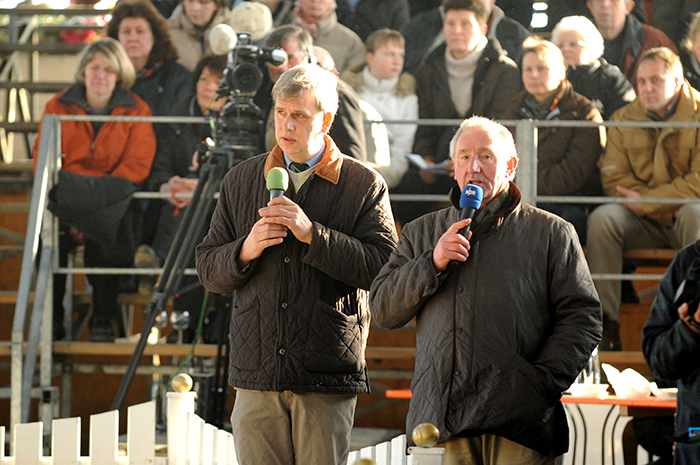
Jens was always a breeder who listened hard to the greats of dressage
– he shares the stage with Olympic rider and trainer, Klaus Balkenhol
(Photo – Kiki Beelitz)
“I saw all 400 or 500 horses they had in the pre-selection. It begins on hard ground and you see what they are looking for, and how they are looking for that. Also, there are not seven persons on the licensing commission, there’s three, and with three people it can work. If you have seven, oh this leg,and oh did you see this, with three it is much easier to see black or white.”
story continues below the advertisement
“They are clever how they run their stallion show. They sell the tables for the guests, and it is quite expensive to buy a table, even a regular seat is €47. In Germany, the crowd pays nothing, everyone is in for free. What is the result? The stallion keepers have to pay for the show, so the pressure is really on that the horses get sold for a lot of money, but for us – like Blue Hors – I think this is a very big gamble to pay those big prices, but here in Holland, there is not so much pressure, the prices are not so high.”
What horses did you like?
“I was really impressed that the Totilas offspring are really good, Total Jr, also. Interesting horses…”
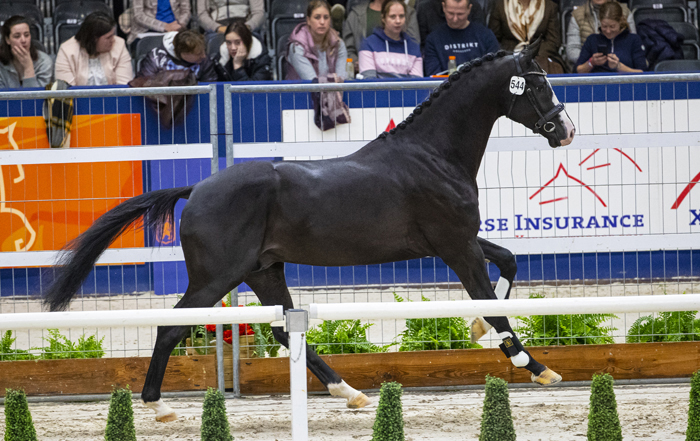
Monte Cristo – one of the impressive sons of Totilas at the Dutch stallion show
(Photo DigiShots)
But he needs a good strong mare, or you get a pony…
“Good, I am with you, to breed with this bloodline and conformation is one thing, but we are not Trakehner breeders or Arab breeders, we have to breed a functional horse that is able to do a Grand Prix, so what you can see when you look at these horses is that you are not just aiming to breed a pretty one. The Dutch horse and the German horse breeding together, when it produces a good one, it is a really good result. For the German breeders, we get from the Dutch more canter because we don’t select on canter. For me the front leg is very important, and if you have a combination of both, you get a better back, you get it in the hind leg that they are stronger, so that is the really good breeding for today.”
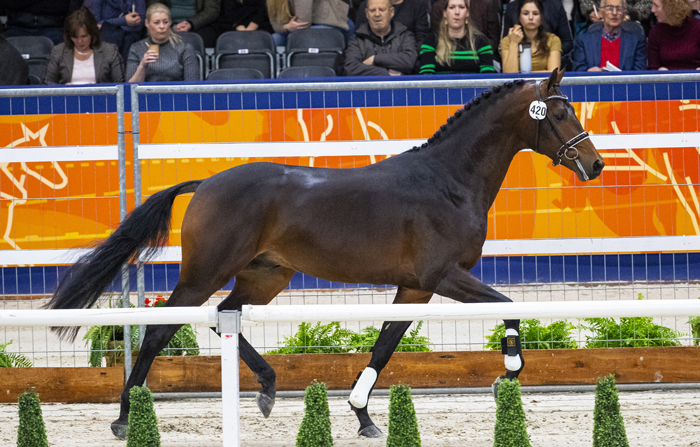
The fusion – Magic Boy, bred in Holland but 2/3 German
– by Fürstenball out of a Damsey / Flemmingh mare
(Photo – DigiShots)
story continues below the advertisement
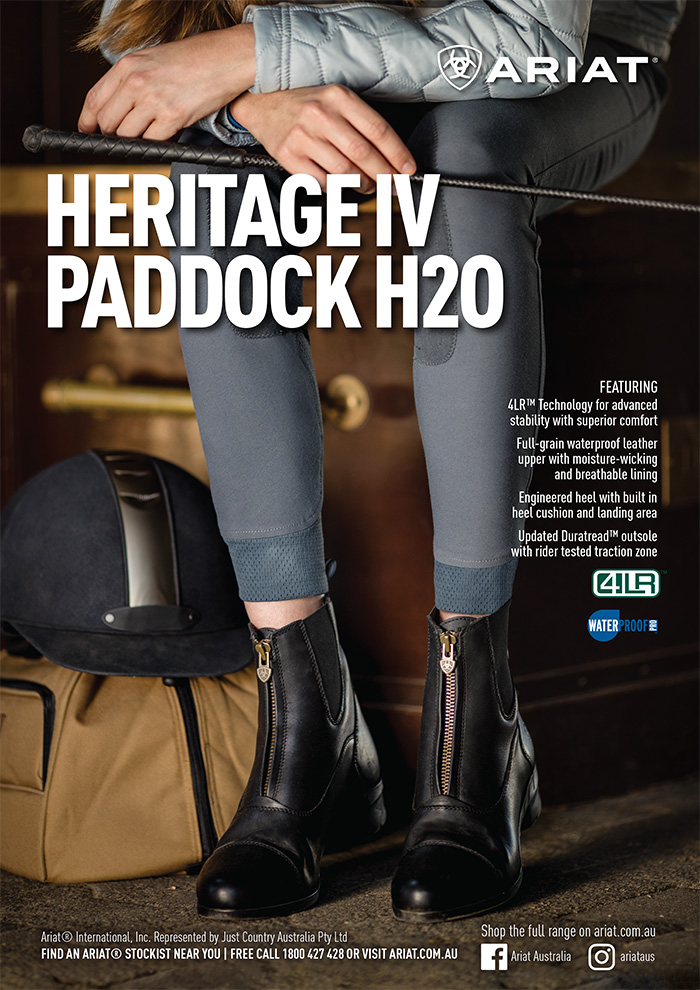
But I thought often, especially the spectators, they seemed to like the horses that are very tense, very tight in the back with very spikey movement – and it’s the same problem still with their riders. Look at the difference at the recent Amsterdam show, the top horses were German and they were top because they go in a calm, correct manner, while the top Dutch horses still look very tense and ‘spectacular’ in a bad way…
“But this is the generation they were breeding twenty years ago, and you remember twenty years ago when we sat together at the KWPN stallion show, I didn’t like the Dutch breeding, I was a traditional German breeder. But today, I can see Grand Prix horses for the future, and I am very proud that I have found there is something in between – and that something in between is for me, very interesting, we now have to talk about European breeding, not Hanover, not Oldenburg, not Westfalia, breeding is coming all-over Europe, and for the horse breeders this is a big chance for us to get good dressage horses.”
“They do it with jumping horses, why not with dressage horses? A good jumping Grand Prix mare has a good chance to produce a Grand Prix horse – why not with dressage horses? And for this we have to think European…”
story continues below the advertisement
But do you think sometimes the Dutch get obsessed with the idea of pretty. I remember that lovely man, Wim Ernes, why don’t you use Breitling, he is producing so many Grand Prix foals. Oh, we can’t use him, he is too ugly…
“I am with you. And you see it now, they want Damsey for Dutch breeding. That is very interesting. He’s eighteen years old and for three years he has been the best stallion in the dressage rankings. They say to us, his attributes are that he is sound, and he can give this to the Dutch breeding. I said to them, but who uses an old stallion? No, they say, we had this success with De Niro, we did it the same way, introduced De Niro to the breeders and it works well on the dam side. But in Germany, they won’t use Damsey because he has a Rituel mother – unpopular bloodlines – but in the end, this horse did a great job, and this thinking by the Dutch to breed mind and walk is thinking for the future. To breed sport horses, that is the key, not to breed a pretty one, and after two years, you need another one! What’s that? Nothing, nothing!”
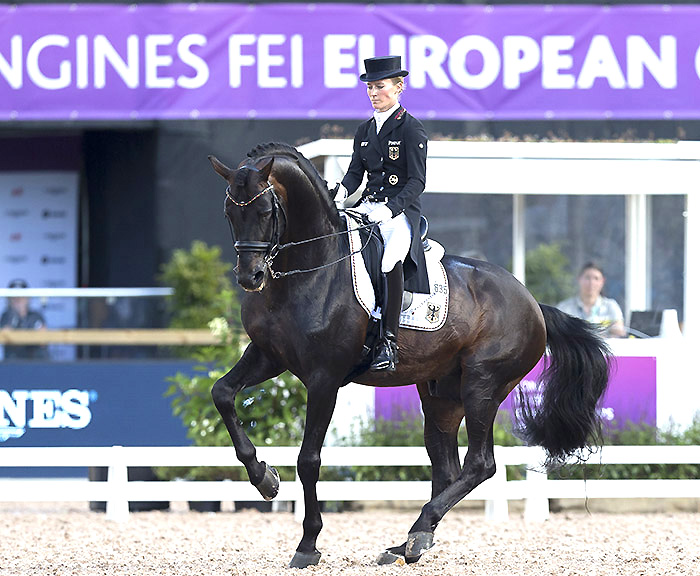
Damsey – the Dutch breeders want Grand Prix blood
(Photo Claes Jakobsson/FEI)
“Look at Zack. Zack is a Dutch horse and in the pre-selection for this stallion show, there were three or four horses by this stallion, now you see a family, and this is the direction we must take in breeding horses. Not the perfect model, not the most commercial horse, we have to breed Grand Prix horses. Always we can climb in small steps with the conformation, but brain is the difficult thing to breed. A smart mind.”
I was thinking the other day that Zack is perhaps the first stallion since De Niro, to produce stallion sons, real stallion sons…
“It is not easy to breed with Zack, this is interesting, he makes not the conformation, or the ‘pretty’ horse. The breeder has not been thinking long term, he wants to sell a foal – we must take this out of the breeder’s brain, they must aim to produce a good horse. We have to start with rideability.”
But Zack is producing very good horses…
“Yes, he is a European stallion, he has good offspring…”
And his son, Zonic is producing good horses, nicer looking horses than the Zacks…
“This is the result, with more frame and uphill, better front, all these things – there is an improvement.”
And Sezuan, do you think he will breed anything?
“What this horse is capable to do, we will see in the future. He makes also not pretty horses, but we will see what is coming out – it’s like I was saying before, there’s very good canter, very good mind, if you need canter and mind, then this is an interesting stallion. I remember Sezuan’s grand-mother, she was a very nice Holstein mare, she was really old fashioned, but she won at the shows and produced really good foals. She was a top mare at that time.”
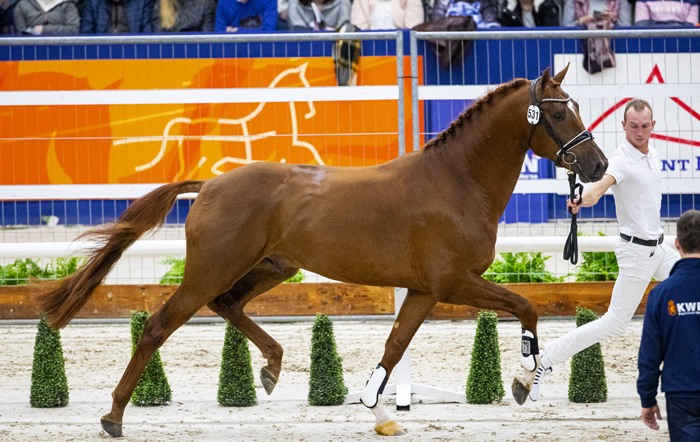
Max, a very exciting colt by Sezuan at the KWPN show
(Photo – DigiShots)
“With Sezuan, the conformation is really interesting. It’s like the Dutch now with Jameson (Blue Hors Zack / Negro). I am very interested to see the offspring of Jameson, the mother was very good, very good conformation, she competed in the children’s classes with the girl, to Grand Prix. Very interesting. You can discuss the walk but you cannot have everything from a stallion.”
Did you see Jameson at the Worlds, with the little girl riding him? It was beautiful…
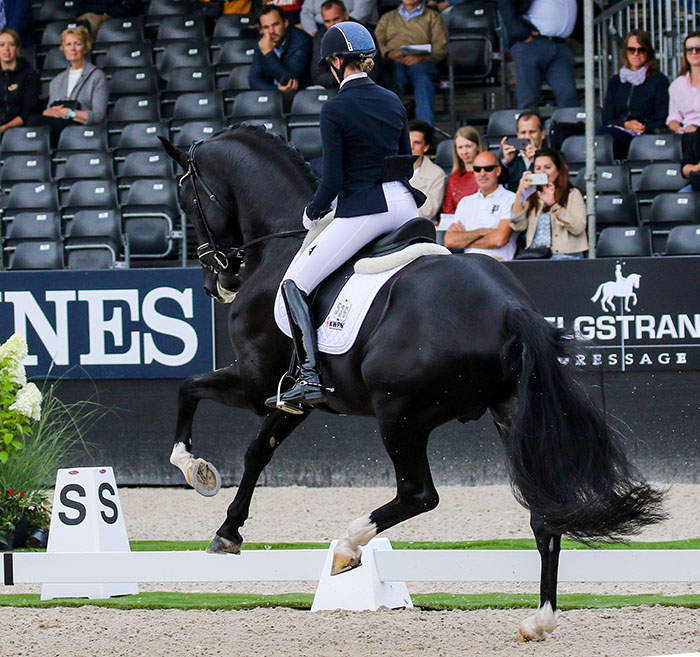
Jameson at the World Champs – front leg and an uphill canter
(Photo – Kenneth Braddick dressage news)
“Beautiful, and so when I want to have front leg and an uphill horse in canter, then this is the right stallion. I have two mares in foal to Jameson, one Lauries Crusador mare, she is from the mare lines of Dr Schulz – Lauries Crusador, World Cup, then comes Gänseliesel. Old fashioned with just one times Thoroughbred – I will be very interested to see what comes out, she is a very pretty mare and has produced three foals, one competing Grand Prix and two competing St George. I’m looking forward to seeing those foals.”
Belissimo M – Bundeschampion
Gänseliesel was one of the foundation mares of Dr Schulz-Stellenfleth who bred 22 licensed stallions. She is a full-sister to Garibaldi I & II, the dam of Beltain who has been influential through his son Belissimo M, and the dam of Wolke who was the mother of Wolkenstein II.
“This is what the jumping breeders do. If you have a mare with no scope, take a stallion with scope. So why not with the dressage mares? I need front leg, so I use a stallion with front leg.”
It sounds simple…
“Yes, but why don’t they do it? When I need type, I take a Trakehner or take Sandro Hit bloodlines, so you breed to certain stallions for certain specific qualities, but no, they are always looking for the complete horse and they say ‘he makes it’, stupid.”
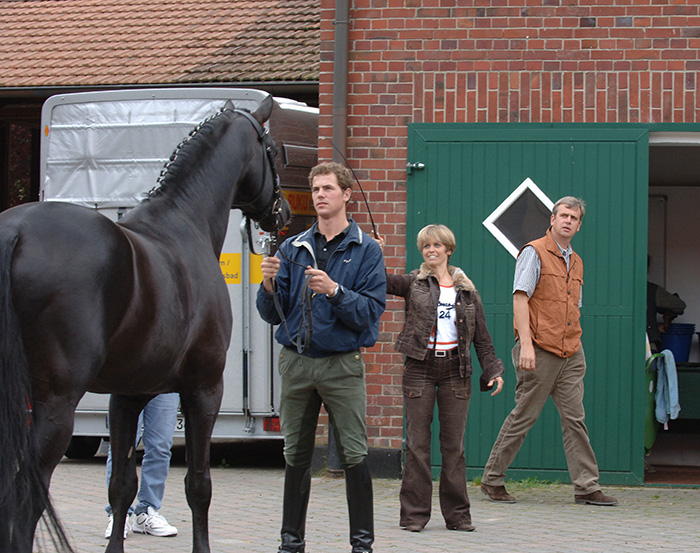
Stefan Wolff stands up His Highness, Susanne keeps his ears pricked, Jens the supervisor
“I was always very traditional, Hanoverian, but in Hanover, we have no selection for the canter, just in the stallions and the mare test. We have 8000 foals, and just 600 or 700 go to the stallion and the mare tests and are selected on canter. Why not everywhere? Every horse must walk, trot, canter. So when I need canter, I want to use, I look for stallions with canter and not look for what is marketable.”
“For example this Confess Color, the Cadeau Noir stallion that was the top price at the Hanoverian auction. They said this in an outcross pedigree and no one will use it, but… I judged two times the mare family of Cadeau Noir, they won two times the big mare show in Lüneberg, from twenty mare families. They were pretty mares in that family. I know as well this line, I know the great grand-dam, Graefin Galina by Graf Fackel, she was a bit heavy, but she has some attributes from the Holsteiner that are good.”
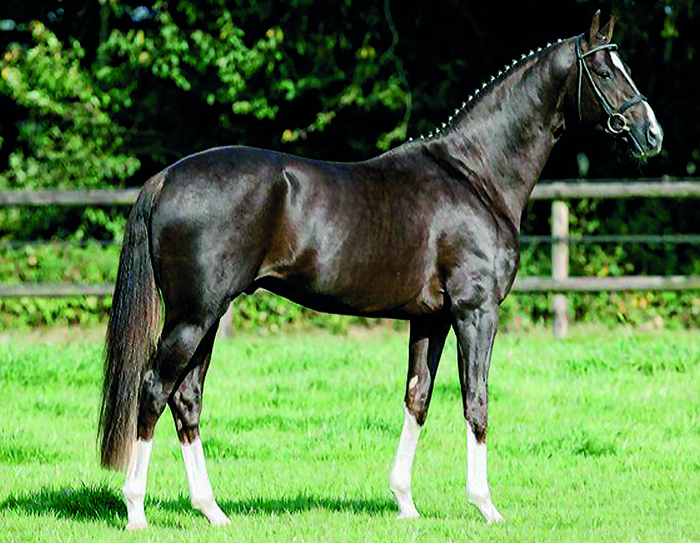
Dam sire of Confess Color, Licosto
“The mother of Confess Color is by Licosto, I had him at my place, he was seventh in the world championships, no one talks about that stallion, he’s a secret. Then comes Damsey and then comes Lauries Crusador xx, Wolkenstein, and then Forest xx, Thoroughbred again. It’s funny how it comes back that there is so much Thoroughbred in the family, Licosto is the grandson of Licoto, so three Thoroghbreds, Licoto, Lauries Crusador, Forrest. So is Confess Color an out-cross bloodline? No, it is breeding with development – this is breeding not fashion breeding.”
What are you doing with Blue Hors?
“I am buying foals, with my colleague, we buy stallions, and I am two times a month, selecting horses on Blue Hors. Looking which rider suits which horse, do we go on with this horse, or not? It is really interesting, modern, there are separate divisions in this company: one guy is doing the young ones, one is doing the older horses, the chairman is from of the management of Leggo. He’s not a horseman, he understands the horse business, but in a very different way. He is not interested when I say this horse is out of this dam line… No, he wants a concept. What are we doing with this horse? I am very proud, it is not a dealing stable, so the idea is that the riders have five horses that can score over 80%. So there’s an older one in competition, and then the young ones. We see how two of the horses went to Agneta Kirk Thinggaard, the daughter, and how well they compete for her, so they have been taken from a foal to an international Grand Prix horse, that is the planning.”
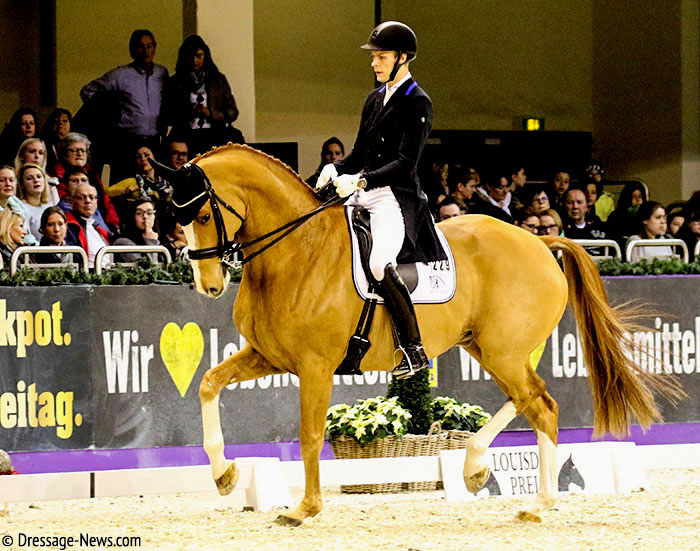
The next star – Zepter
(Photo – Kenneth Braddick dressage news)
And Zepter, what is happening with him?
“Zack and Zepter, we are very careful with them, so that we can go to the Olympic Games. The idea is that both riders are in the Danish team, Agneta and Daniel Bachmann Andersen, and we do everything to make that happen. Zack is out of breeding, no risks, we don’t go to many shows, so the goal is that he has two horses, in case one is lame or whatever, you never know.”
But Zepter is the big star coming…
“Absolutely, this is a superstar, and so we say, not too much shows, not going to the World Cup. Keep them sound and see that both horses are fit and see what happens.”
ends
